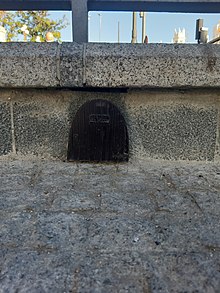Tooth fairy
The Mouse or Ratoncito Pérez is a fantastic character. He is a myth from adults to children.
Universal tradition
It is recognized as "Ratón" or "Ratoncito Pérez" in Spanish-speaking countries, with the exception of some regions of Mexico, where it is simply called "el Raton de los dientes".
In France it is called la petite souris («Little Mouse»), and in Italy it is known as Topolino, Topino (« Little Mouse") or Fatina ("Fairy"). In other places there are other fantastic beings in charge of collecting teeth, such as Tooth Fairy («Fairy of the teeth») in the Germanic countries, l'Angelet (« el Angelito") or La rateta ("the little rat") in Catalonia, Maritxu teilatukoa ("Mari la del tejado") in the Basque Country – especially Vizcaya –, or L'Esquilu de los dientis ("The Tooth Squirrel") in Cantabria. In some places it is a tradition to throw children's teeth onto the roofs of houses.[citation required]
Origin
The most probable origin of the little mouse and its link with a fairy comes from an 18th century French tale of the Baroness d'Aulnoy: La Bonne Petite Souris (The Good Little Mouse).
In Spain, his introduction to children's mythology has been attributed to Luis Coloma (also the author of Pequeñeces or Jeromín), when around 1894 the Jesuit was asked to write a story for the future King Alfonso XIII, who was 8 years old at the time, and who lost a tooth. However, in the novel La de Bringas by Benito Pérez Galdós, written in 1884 and set in 1868, the author compares a character, Francisco Bringas, miserly and stingy, with the little mouse Pérez, then it had to be popular with the public already before the story of Father Coloma.
Within the memory plan of Madrid, the city council of the Villa placed a plaque at number 8 of Calle del Arenal, the address where Luis Coloma located the rodent's home; on the plaque it can be read: «He lived here, inside from a box of cookies in the Prast el Ratón Pérez confectionery, according to the story that Father Coloma wrote for the boy king Alfonso XIII." A Museum of the Pérez Mouse was installed in a neighboring place.
For years, a small door has been located at the bottom of one of the entrances to the Banco de España station, specifically the entrance located next to the Army Headquarters and in front of the Banco de España. The anonymous person who placed this door reflected "that it was the door of the Pérez Mouse". This door has become a curiosity for visitors but over time it has been damaged and also, someone recently vandalized it so it was totally damaged. However, Metro de Madrid reported on July 10, 2021 that the Ratoncito Pérez door, located at said access to the Banco de España station, has already been repaired.
Related Myths
In some Asian countries, such as Korea, India, Japan, and Vietnam, when a child loses a tooth, it is customary to throw it up the ceiling if it came from the lower jaw, or into the space under the floor if it came from the upper jaw. While this is being done, the boy expresses a wish that the tooth be replaced with the tooth of a mouse. This tradition is based on the fact that mice's teeth grow throughout their lives, a characteristic of all rodents. In Japan, a variation calls for the upper teeth to shoot straight down into the ground and the lower teeth straight up into the air, the idea being that the incoming teeth grow straight.
In Near Eastern countries (including Iraq, Jordan, Palestine, Egypt and Sudan) there is a tradition of throwing a baby tooth into the sky towards the Sun or towards Allah. This tradition may have its origin in a pre-Islamic offering dating back to at least the 13th century. It is also mentioned by Izz bin Hibat Allah Al Hadid in the 13th century century.
Music, cinema and theater
There are several children's songs about the Little Mouse Pérez, among them the one by Flavia Palmiero from the album La Ola está de fiesta.
In 2005, El Ratón Pérez, your first musical, by Cibrian Mahler (which would be revived in 2011) premiered in Buenos Aires. In 2007 a new theatrical show was presented at the Teatro El Nacional El Ratón Pérez y el cofre perdido, and in April 2010, at the Teatro Gran Rex, El Ratón Pérez Superpoderoso.
In 2006 the story was made into a film in a Spanish-Argentine co-production, directed by Juan Pablo Buscarini, under the title El Ratón Perez (Pérez, the little mouse of your dreams in Spain and Mexico).
In January 2009, Disney premiered in Latin America the film El Ratón Pérez 2, under the direction of Andrés G. Schaer. (Pérez, the little mouse of your dreams 2 in Spain and Mexico).
In 2012 the Tooth Fairy had a brief cameo in the DreamWorks Animation film Rise of the Guardians. During the collection of teeth, a mini-tooth fairy finds the mouse taking a tooth and fights with him, but she explains that he is part of the Latino division while the mouse shows his anger by yelling and throwing his hat; however, the mouse in the film appears to be a helper mouse that works for the Tooth Fairy, similar to those that work for the Tooth Fairy.
Translations
To commemorate the 180th anniversary of its foundation, the Padre Luis Coloma Secondary Education Institute in Jerez de la Frontera, Spain, sponsored a translation of the story adapted into Chinese.
Contenido relacionado
Spring Festivals in Murcia
Hymni i Flamurit
Oikistes


